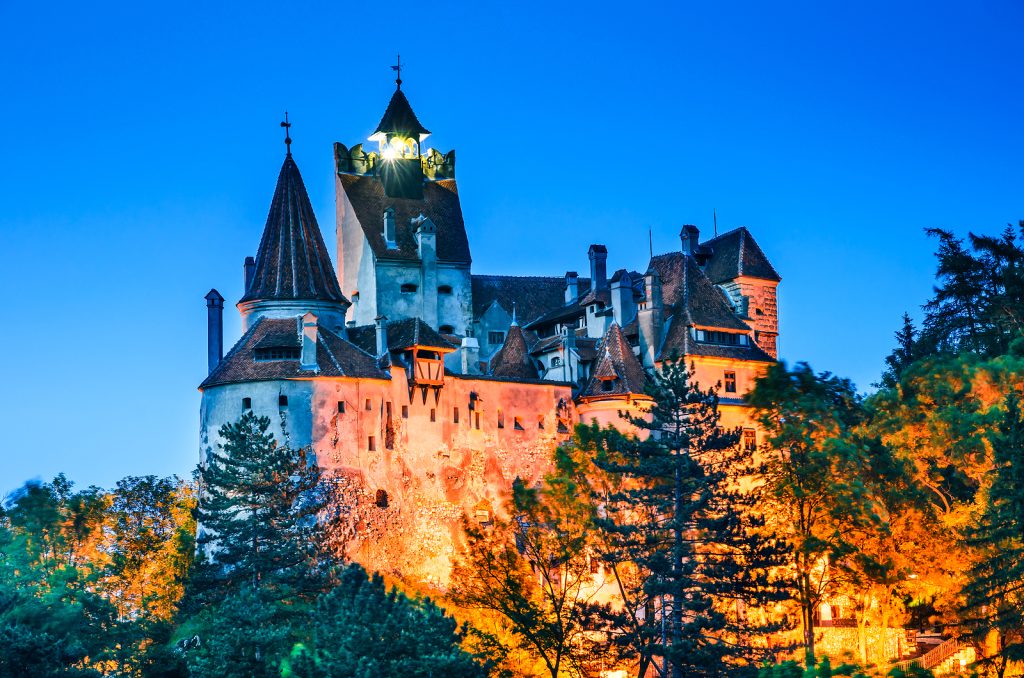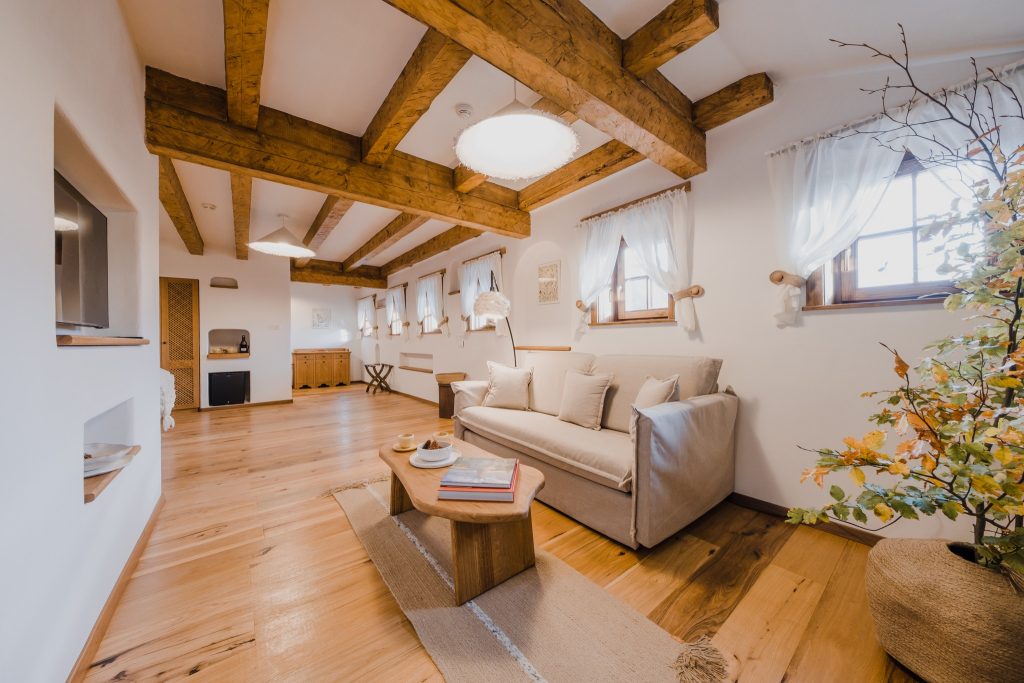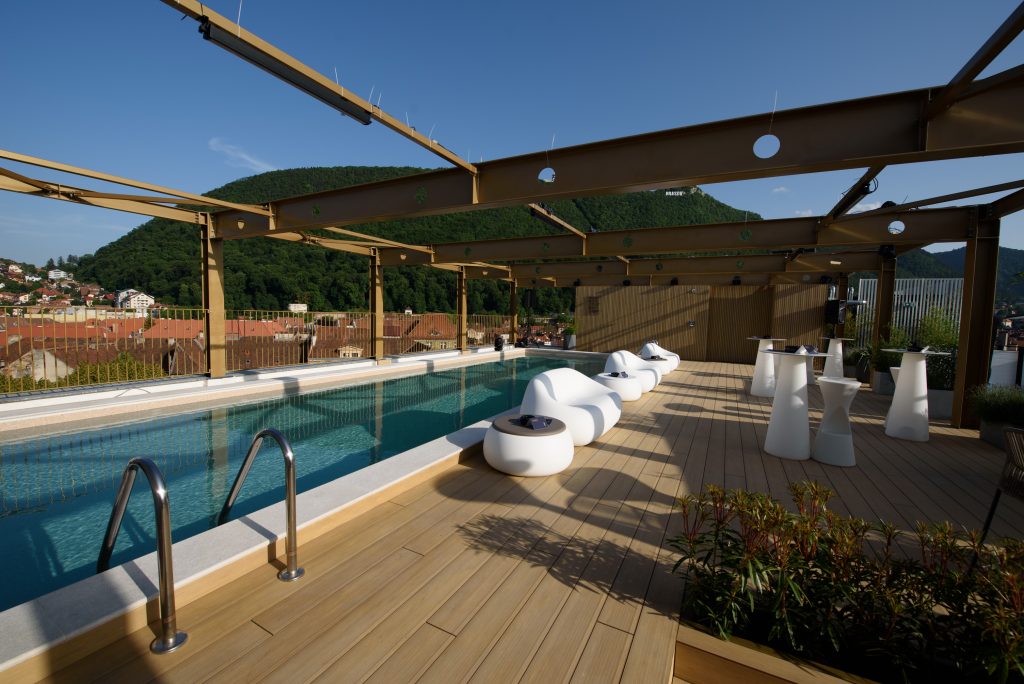The travel industry in Central and Eastern Europe was built on offering budget accommodation and low-cost (and usually poor quality) services to western European tourists seeking inexpensive holidays. It’s time to change the narrative.
Arguably Romania’s best-known attraction, Bran Castle remains, nearly 700 years after it was first built, a proud, majestic sentinel on the border of Transylvania and Wallachia (two of the three historic principalities which make up the modern country of Romania).
Perched atop a dramatic cliff, the fortress boasts a storied history almost always laced with tales of Vlad the Impaler—the inspiration for Bram Stoker’s Dracula. There’s little evidence that Vlad ever made great use of the castle, and Stoker never set foot in Transylvania, but at night, its walls and towers lit up with cinema-set precision, it certainly looks the part. If any castle in the world was home to Dracula, then this was it.
- Travelling through Central and Eastern Europe and Central Asia: Five essential reads
- Autumn in Slovakia’s High Tatras
- Why Budapest is (probably) Central Europe’s greatest city
Romania has never been afraid of cashing in on the Dracula legend, and at Bran, it shows. Over the past half century a booming tourism industry has flourished along the mountain pass that links Transylvania and Wallachia either side of the castle. A seemingly endless chain of pensions and hotels, many of questionable design entirely out of keeping with their surroundings, lines the road from Rucar in the south to Râșnov in the north.
A single carriageway road hardly copes with the number of vehicles permanently scuttling up and down, creating an endless traffic jam that when combined with the incongruous roadside constructions further fades the splendour and grandeur of what was once perhaps the most majestic spot in all Romania. Only the castle itself, quite literally, manages to rise above the morass below.

Bran Castle. It certainly looks the part
Bran is a microcosm of the problems facing tourism not just in Romania but throughout Central and Eastern Europe. The overdevelopment of Bansko ski resort in Bulgaria, or the seafront at Batumi in Georgia, are just two other (of many) negative examples of loose planning laws and a culture of ‘stock ‘em high, sell ‘em cheap’ combining to spoil what made these places attractive to visitors in the first place.
It is a culture that is fed by a constant stream of articles in the global press luring tourists with the promise of ‘budget-friendly’ (the polite term for ‘cheap’) adventures, food, and drink, as if the low price of beer is reason alone to visit a region, city, or country.
Equally depressingly, many countries in Central and Eastern Europe have done little to shed this image as ‘low-cost’ destinations. Some have openly embraced it. It is, perhaps, a lingering relic of pre-1989 times when these nations, all under communist regimes, focused on attracting travellers primarily through affordability.
Back then, the travel industry in these countries was built on offering budget accommodation and low-cost (and usually poor quality) services to western European tourists seeking inexpensive holidays.
This legacy has been hard to shake off, as decades of promoting low-cost tourism have deeply ingrained this image in the global consciousness. The challenge now is for these countries to rebrand themselves, shifting the focus from cheap prices to unique, high-quality experiences that highlight their rich cultural heritage, stunning natural landscapes, and growing capabilities in delivering premium services.
Value-rich experiences
Indeed, as the travel and tourism sector evolves, so too must the region. The narrative of ‘cheap’ travel is becoming outdated (in many places it is now simply wrong) meaning that it’s high time for CEE to reposition itself as a hub of premium, value-rich experiences.
This shift is not just necessary but essential for sustainable growth and alignment with global travel trends. Owners of places such as Matca, hidden away in the hills around nine kilometres from Bran Castle, understand this.
Open just a few months, Matca, which last week became part of the Relais & Châteaux association of individually owned and operated luxury hotels and restaurants, is—we must hope—the future of tourism in the region.
Foregoing the temptation to build yet another eyesore, Matca’s investors—who are Romanians—instead created accommodation in beautifully converted farmhouses complemented by a central building that hosts a stunning spa and a restaurant whose menu respects local traditions and makes use of local ingredients; all with a contemporary twist.

One of the converted farmhouses at Matca
Matca offers a glimpse of Romania as it once was, but also a portal to its future. The views, in every direction, are unspoilt by development, a reminder that this was once grazing land and little else. We can but hope that it will not for long be the exception, but the rule.
As the world becomes smaller and the horizons of travellers expand, moving up the value chain and offering exclusive experiences (Matca can even arrange private tours of Bran Castle) is arguably the only way for the tourism industry throughout Central and Eastern Europe to remain sustainable.
A fragile model
Indeed, it’s a hypothesis that holds true for the region’s entire economy and not just for travel and tourism. Several studies confirm it; notably a major 2023 report from the Vienna Institute for International Economic Studies (wiiw) which advocates for a new growth model for the region given that the ‘extended workbench’ (read: ‘cheap labour’) template that has been successful until now has reached its limits.
Mass tourism, characterised by low-cost travel packages and large crowds, has led to various problems globally, including environmental degradation, cultural erosion, and overcrowded attractions.
In Central and Eastern Europe, even large cities such as Prague, Budapest, and Dubrovnik have witnessed the negative impacts firsthand. The influx of budget-conscious tourists attracted by those promises of cheap beer has strained local infrastructure, angered locals, and has led to the creation of a tourism model that is unsustainable and benefits neither the local population nor the environment.
The Covid-19 pandemic further underscored the fragility of relying on mass tourism. As travel halted, many CEE destinations faced economic hardships, revealing the need for a more resilient and diversified tourism strategy.
New Prague? No thanks
Brașov, a medieval city 30 kilometres northeast of Bran, has never relied on mass tourism, which partly explains its enduring appeal. Aside from a couple of modernist aberrations and a kitsch and unnecessary Hollywood-style sign on the Tâmpa Mountain that overlooks the city, Brașov – its medieval quarters at least – remains charming and rewarding of long strolls along streets that in part remain cobbled, lined with hidden courtyards, shops, cafes and restaurants.
The opening of an airport last year has nevertheless raised some fears of an unwanted invasion of the wrong kind of tourist. “We really don’t want to become the next Prague,” one local tour guide tells me. But if any city in Romania is well-prepared to fend off an incoming invasion, Brașov is it. The many fortified churches in the surrounding area did just that for centuries.

Brașov, seen from the rooftop pool of the Radisson Blu Aurum
More recently, strict rules on the development of the city’s old town have largely prevented the appearance of ugly, cheap hotels, an approach that has gently nurtured the creation of a market geared towards a more affluent and conscientious traveler willing to pay a premium for unique and responsible travel experiences.
The Radisson Blu Aurum, at the entrance to Brașov’s old town, is evidence of that – a modern hotel whose design is at once contemporary and unintrusive. A rooftop swimming pool offers enviable views of the city and the mountains beyond.
One of these is home to Poiana Brașov, Romania’s leading ski resort which has become a year-round destination for active types thanks to the development of an extensive network of mountain biking trails. There’s also hiking for those months of the year when the snow is absent.
Poiana Brașov is arguably another example of Romania getting tourism broadly right. Almost the definitive template for cheap and (not always) cheerful mass tourism before 1989, development of the resort over the past three decades has focused on quality over quantity. Only a handful of big hotels have been built, almost all at the upper end of the market.

Bradul Hotel, Poiana Brașov
Instead, money has been poured into renovating existing hotels, such as the Sport (one of the oldest in the resort) and its neighbour, the Bradul. Both played host to cheap package tourists in the not-so-distant past – today they offer accommodation, food, and a spa experience in keeping with their magnificent setting at the foot of a mountain covered in fragrant pine trees.
An old template becomes the new
Once the template for mass tourism, Poiana Brașov (though not perfect – some of its après ski bars can be very loud during the ski season, lift queues long at weekends, and some locals grumble that prices have become too high) is arguably now an example of a new template for a new era of travel in Central and Eastern Europe
By moving up the value chain, the region can offer richer, more sustainable travel experiences that attract a higher-spending, discerning clientele. This transformation requires strategic investments in infrastructure, services, and marketing, along with a commitment to sustainability and authenticity.
It also needs travel writers to end, once and for all, their obsession with ‘cheap’ and ‘low-cost’ destinations. The future of travel belongs to those who can adapt and innovate. For Central and Eastern Europe, the time is now to create a new narrative and set the stage for a vibrant, sustainable tourism industry that will stand the test of time.
From Matca above Bran to Poiana Brașov, a small corner of Transylvania is doing just that.
Unlike many news and information platforms, Emerging Europe is free to read, and always will be. There is no paywall here. We are independent, not affiliated with nor representing any political party or business organisation. We want the very best for emerging Europe, nothing more, nothing less. Your support will help us continue to spread the word about this amazing region.
You can contribute here. Thank you.


